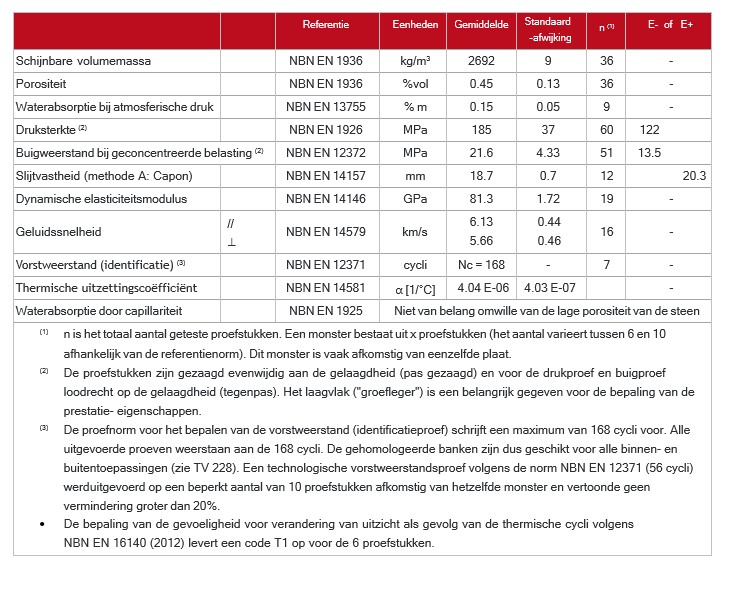Maas limestone of Vinalmont
1 Geography / Geology
The S.A. Calcaire de Vinalmont mines in Vinalmont a blue stone called "MASKALKSTEEN - STEEN VAN VINALMONT". The quarry is located at Vinalmont, in the valley Fonds du Roua, west of the center of Vinalmont, in the north flank of the Synclinorium of Namur. Lambert coordinates: N 50° 34' 6'' E 5° 12' 10''.
The material is used as building stone and building stone. In the quarry, a compact, fine-grained, non-porous limestone is quarried, ranging from a pale gray to gray-beige color when cut to a dark gray color when freshly fractured. The stone acquires a light gray patina typical of this material. The quarried layers are located on the north side of the Namur Basin, east of the Mehaigne, and form the Neffe Formation of Upper Moliniacian-age, Visean (V2a) series - Mississippian, Lower Carboniferous.
The massive rock is intersected, almost perpendicular to the stratification, by three series of diacls. The quarrying is done in open air; the banks have a stretch of about N72°-81°E and a slope of 5°-10°S.
The total mineable thickness in one piece is about 38 m. The approval concerns the parts of the quarry of similar quality, i.e., the homogeneous, low stylolite-bearing light gray solid bank of 30 m thickness whose color is pale gray, clearly indicated on the coupe (see p. 5 Appendix 1, geological coupe). These strongly toothed stylolites (electrocardiogram shape) are typical of the Vinalmont rock. When fused and closed, they allow both use perpendicular to the stratification (counterpass) and parallel to the stratification (pass).
Veins that are poorly fused and very fine (less than 0.1 mm) are to be rejected as they form preferential fracture sites of the rock. The latter usually fracture during rock processing.
2 Petrography / Lithology
Macroscopic description: "MASKALKSTEEN - STONE OF VINALMONT" is a chemically very pure oolitic compact limestone, of sedimentary origin, with a homogeneous texture showing cross-layering, which is expressed by the patina. The color of the rock is pale gray to gray-beige when cut and dark gray when freshly fractured. The stone acquires a light gray patina typical of this material. This patina, which is due to aging and inherent in the composition of the rock, must be taken into account in restoration works. The limestone contains fragments of corals (some banks are rich in corals of the type Siphonodendron) and shells of brachiopods and of gastropods.
According to PTV 819-4 "Classification of rocks in the context of homologation with reference to EN 12670", it concerns a sedimentary carbonate rock - oolitic limestone: 2.2.1.3.
Microscopic description: "MASKALKSTEEN - STONE OF VINALMONT" is an oolitic bioclastic limestone rich in pellets. The rock consists mainly of a fauna rich in microfossils, whose foraminifers are diagnostic of age, and with a packstone to grainstone texture (DUNHAM classification) or a biosparite to biomicrite (FOLK classification), see EN 12670). Other lithological peculiarities may be present.
Composition (for information): The average composition is 99% calcium carbonate (CaCO3), 0.5% to 1% silicon (SiO2), iron, manganese and magnesium oxides.

